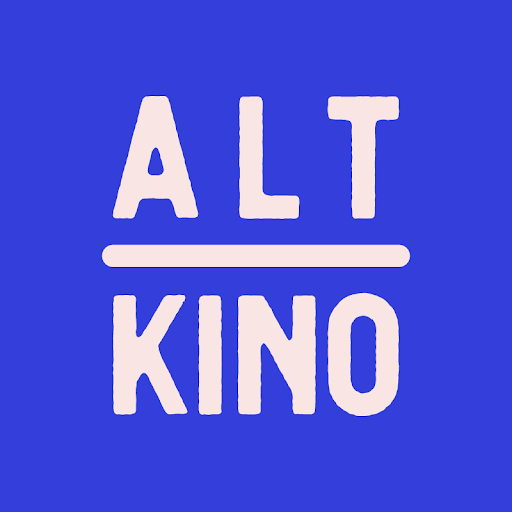ALT/KINO is covering this year’s online iteration of 25FPS via a series of correspondences between Patrick Gamble and Ben Nicholson about programmes in the festival’s competition strand. In our final instalment, Ben responds to Patrick and discusses the ‘Visions’ programme.
Sun Dog (Dorian Jespers, 2020)
Dear Patrick,
I’m kind of sad that this little train of correspondence is coming to an end. I’ve struggled for a while now with the pressure to assess the “objective quality” of what I see and even in something as loose as a festival round-up, there’s often an implication that you’re selected the “best” of the festival – this back and forth has felt somewhat warmer and more open than those pieces can often feel.
It was interesting to hear about your slightly different reaction to Austrian Pavilion upon a rewatch and speaks to the inherent value of the paratexts surrounding films. While we might, as critics, wish to be able to judge a piece purely on its own terms and by what we see and experience on screen, so much artists’ moving image work is enriched by a broader understanding of its conception, influences, and the specifics of its creation. I have to admit that not much that I’ve seen in this year of digital festivals has quite managed to offer the level of discursive nourishment that often helps to embed films in my mind – though Alchemy (back in May) and Berwick (currently ongoing) have both made fair, if different, attempts at it. I think that in lieu of that environment, our messages to one another have again filled a film-watching void that doesn’t tend to be filled by affirmation via “likes” when you tweet a review into the ether.
I can also very much understand why Austrian Pavilion brought Claudia Larcher’s Collapsing Mies to mind, and thinking about their shared thematic concerns alongside visual motifs made me wonder whether Dianna Barrie’s Self Portrait with Bag – the opening film of the ‘Dreamscapes’ programme – couldn’t also be discussed in relation to them, a film in which the tiny of holes of a black cotton bag create dozens of tessellating frames on the hand-cranked Super 8 inside it, challenging the strictures of the self-portraiture as well as those of the celluloid camera’s frame.
You were 100% right, too, with your suggestion that Suneil Sanzgiri’s At Home But Not At Home would be of interest. I actually saw it at Alchemy and thoroughly enjoyed revisiting in a programme that drew more on the film’s interest in imagined/recalled space than the familial theme that was highlighted by the Alchemy programme. It works exceptionally in concert with the recreated digital memories in Ismaël Joffroy Chandoutis’ Maalbeek and their engagement with histories not experienced, or remembered, also transformed my reading of Erpe-Mere. While watching it I was reminded of Margaret Salmon’s beguiling Eglantine, as an experience of the natural rhythms, sights and sounds, but by the end of the programme, Erpe-Mere’s more abstract finale felt like a journey back into deep time, to some prior evolutionary state.
I am aware that I’ve already wiled away much of this response referring back to the ‘Dreamscapes’ programme and I wonder if that is partly because I felt less of a tangible connection between the films in the ‘Visions’ programme, despite enjoying them individually. I’ve been an admirer of Ben Rivers’ work for several years and his new film, Look The Below, is the culmination of a trilogy in collaboration with Mark von Schlegell - the middle film of this series, Urth, is a personal favourite. In this instance what is effectively nonfiction footage is repurposed to tell a sci-fi inflected tell of a possible future, in this instance the Wookey Hole Caves in Somerset play host to an ancient civilisation and a forthcoming subterranean fate. It’s a typically considered work from Rivers, crafting a cumulative pathos through the excavation of space and the layering of image.
Perhaps a notion of a future being born from the debris of the past is enough to tie the films in the programme together, and it certainly applies quite literally to the processes of the very watchable Further Radical and Events Meant to be Forgotten. The former, made by Stefano Canapa involves photochemical emulsion made of black radish bringing the images to light, while the latter, by Marko Tadić, utilises photographic archives discovered at a flea market (and set against a poem by Hans Magnus Enzensberger) to explore memory.
The link is possibly a little more of a stretch in Dorian Jespers’ Sun Dog, but it makes for a worthy winner of this year’s audience award and recipient of Davor Sanvincenti’s Grand Prix. Ostensibly a tale of a young locksmith Fedor wandering the long night of the snowbound city of Murmansk, it calls to mind the untethered camerawork of Gaspar Noé films, and it’s easy to see why it’s been readily described as ‘phantasmagorical.’ It’s very much an experiential watch and that’s perhaps why, when Fedor is confronted by a glorious sunrise at the film’s conclusion, the sensation is quite simply overwhelming. And perhaps this promise of a new dawn is enough to come back to the rest of the programme after all.
Finally, before I sign off, we skipped one of the competition programmes so that we had an even number to write about and so the ‘Wanderings’ selection was omitted. I know that you’ve already seen and written about Ana Vaz’s fantastic Apiyemiyekî? when it played Berlin, but I’m not sure whether you’d happened across Rainer Kohlberger’s extraordinary light show There must be some kind of way out of here. If not, I highly recommend checking it out when you have the chance, it’s a wild ride.
Already looking forward to next year!
Take care,
Ben
The 2020 edition of 25FPS Festival ran from 24 - 27 September

